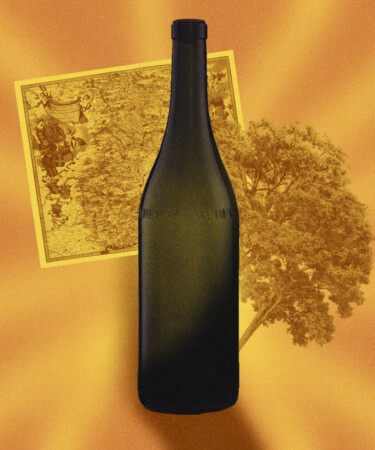When it comes to bottle shapes, there are generally three recognized categories for still wines, and they’re largely based on where the wine is from. Experienced wine drinkers can often distinguish the soft, sloping sides of a Burgundy bottle from the upright and sharp shoulders of one from Bordeaux. And fans of Riesling will undoubtedly recognize that towering, hard-to-fit-in-your-fridge vessel popular in Alsace and Germany.
The unique bottles from the prestigious Italian region of Piedmont, though, often fly under the radar. If you look closely, many wines boasting the Barolo or Barbaresco label are presented in a bottle distinct from the other popular categories. You might notice these bottles’ slightly angular shape or the word “ALBEISA” embossed across the neck. Well, there is a long history behind these glass vessels that can be traced back to the 18th century. Meet the Albeisa bottle.
In the early 1700s, wine producers in the area surrounding Alba in Piedmont came together with a united mission to make the bottles of the region as recognizable as the better-known bottles of Bordeaux and Burgundy. They tapped the master glassblowers of Vetrerie di Poirino for the task. These artists designed the bottle’s signature contoured look and named it “Albeisa” after the town of Alba, crafting each one by hand. The artisanal bottles took off at first and were flaunted on dining tables of both the noble and middle classes alike. But the bottle eventually fell out of favor once industrial glassmaking took hold of the market. After a few decades, the original Albeisa bottle faded in popularity and eventually disappeared.
It wasn’t until 1973 when renowned Barolo producer Renato Ratti decided to recreate the bottle that the style was revived. Sixteen producers in the Alba area joined Ratti to bring back the historic bottle, and together, they created an improved design to help it be more recognizable. The new bottle has “ALBEISA” embossed on all four sides so its origins would be clear when viewing the bottle from any angle.
In an effort to preserve the bottle’s history and ensure it would remain unique to Piedmont, the group of producers also determined certain specifications for which wineries would be allowed to use the bottle. Now, the Albeisa brand is protected by the Associazione dei Produttori dell’Albese, so only certain DOC/DOCG designations and grape varieties are permitted to be housed in Albeisa glass. The project was widely embraced by local producers, and now — 50 years after its revival — about 300 Piedmont producers use the bottle.
While the bottles are meant to preserve local traditions, these producers aren’t afraid to adapt to current circumstances. Heavy glass bottles have been a topic in the wine industry’s conversation around wine’s sustainability, as many are pushing to use lighter glass or alternative containers to lower a wine’s carbon footprint when it comes to materials and transportation. For this reason, in 2007, Albeisa glassmakers created a bottle that weighs about 30 percent less than the traditional version. More producers continue to opt for this lightweight alternative with sustainability in mind. This change has led to lower carbon emissions and decreased use of raw materials, resulting in an estimated reduction of 8 million kilos of glass waste since the new bottle was introduced.
So, if you haven’t noticed this historic bottle before, keep your eye out for it next time you go wine shopping. We’ll take any excuse to drink more Barolo.
